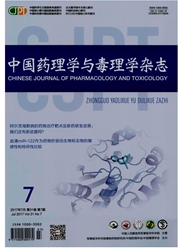

 中文摘要:
中文摘要:
有关量子点(QD)的遗传毒性作用研究取得了一定进展。研究显示,QD进入内环境后通过产生活性氧和释放有毒内核离子这两种机制产生遗传毒效应。彗星实验及微核实验表明,QD产生的遗传毒效应主要是DNA损伤和染色体畸变。DNA损伤和染色体畸变的程度受多个影响因素控制:QD浓度越高毒效应越强;QD粒径越小越易进入细胞核并产生遗传损伤;表面带负电荷的QD毒性更强;裸核QD的毒性比外壳包覆的QD毒性强。另外,QD在不改变细胞遗传物质的条件下,通过表观遗传学改变也可产生遗传效应,使有害效应持续存在。
 英文摘要:
英文摘要:
The genotoxicity of quantum dots (QDs) has been confirmed by a variety of experi- ments. When QDs are absorbed in an internal environment, genotoxic effects can be induced in two ways. One is through the generation of reactive oxygen species, and the other is via core release. The comet assay and micronucleus test show that the genetic toxicity effects of QDs are DNA damage and chromosome aberrations. The level of QDs' genotoxicity can be affected by many factors. It has been observed that more severe genotoxicnity can be caused by QDs of smaller size or in higher concentrations. Negative charges modified QDs often show more significant genetic damage. However shelled QDs can be less harmful or even harmless. Besides, the epigenetic toxicity of QDs can make the adverse effect persistent, even to the next generation, without any genetic damage.
 同期刊论文项目
同期刊论文项目
 同项目期刊论文
同项目期刊论文
 MPA-capped CdTe quantum dots exposure causes neurotoxic effects in nematode Caenorhabditis elegans b
MPA-capped CdTe quantum dots exposure causes neurotoxic effects in nematode Caenorhabditis elegans b Threshold Dose of Three Types of Quantum Dots (QDs) Induces Oxidative Stress Triggers DNA Damage and
Threshold Dose of Three Types of Quantum Dots (QDs) Induces Oxidative Stress Triggers DNA Damage and A solid-state electrochemiluminescence sensing platform for detection of catechol based on novel lum
A solid-state electrochemiluminescence sensing platform for detection of catechol based on novel lum Surface modification of multiwall carbon nanotubes determines the pro-inflammatory outcome in macrop
Surface modification of multiwall carbon nanotubes determines the pro-inflammatory outcome in macrop Electrochemical biosensor based on functional composite nanofibers for detection of K-ras gene via m
Electrochemical biosensor based on functional composite nanofibers for detection of K-ras gene via m A solid-state electrochemiluminescence sensing platform for detection of catechols based on novel lu
A solid-state electrochemiluminescence sensing platform for detection of catechols based on novel lu Oxidative damage of lung and its protective mechanism in mice caused by long-term exposure to titani
Oxidative damage of lung and its protective mechanism in mice caused by long-term exposure to titani Molecular mechanism of hippocampal apoptosis of mice following exposure to titanium dioxide nanopart
Molecular mechanism of hippocampal apoptosis of mice following exposure to titanium dioxide nanopart Acute pulmonary toxic effects of chlorhexidine (CHX) following an intratracheal instillation in rats
Acute pulmonary toxic effects of chlorhexidine (CHX) following an intratracheal instillation in rats Comparison of cytotoxic and inflammatory responses of pristine and functionalized multi-walled carbo
Comparison of cytotoxic and inflammatory responses of pristine and functionalized multi-walled carbo 期刊信息
期刊信息
